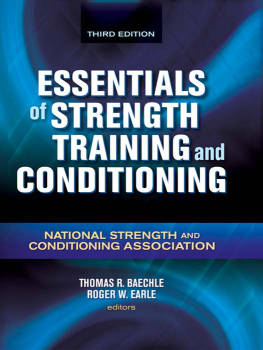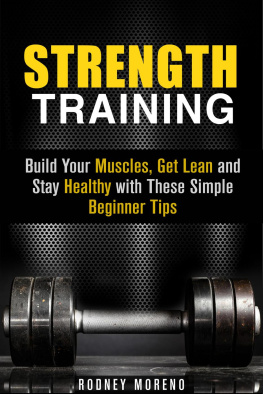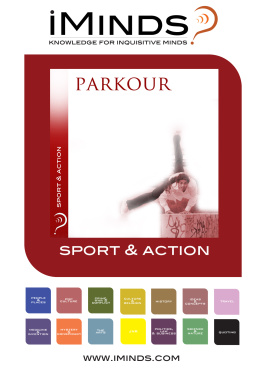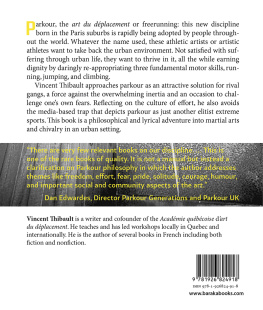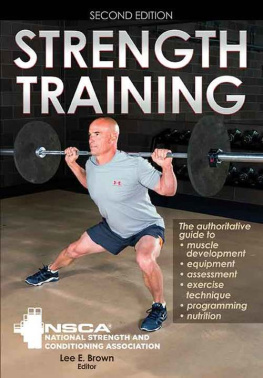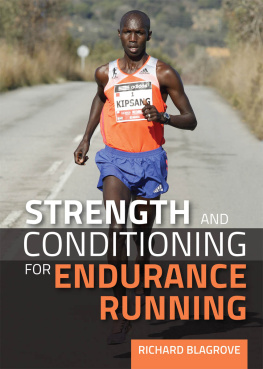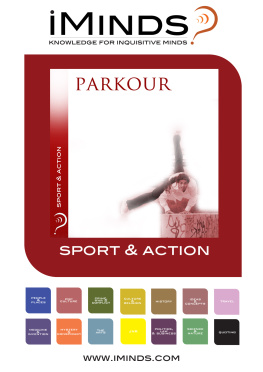All rights reserved.
The author and publisher have provided this e-book to you for your personal use only. You may not make this e-book publicly available in any way. Copyright infringement is against the law. If you believe the copy of this e-book you are reading infringes on the author's copyright, please notify the publisher at: https://us.macmillan.com/piracy
In troduction
What is Parkour?

Parkour has originated from France and is basically a training discipline which was developed through the military obstacle course training by one of the legend of the field David Belle. Parkour moreover looks like a non combative martial art where the practitioner aims to get from a source point to the destination point in the fastest and most efficient way possible. It involves facing and challenging the complex environment continuously without any added equipments. Parkour includes running, climbing, swinging, vaulting, jumping, rolling, quadrupedal movement, and other movements as deemed most suitable for the situation. Parkour is basically seeing the environment in a whole new different way where everything that is an obstacle normally is a challenge to roll, run over or crawl under in the shortest time possible.
Most of us when hearing the word Parkour we get the image of a guy jumping off a rooftop or doing some other crazy maneuvers.
However, this is not an accurate image of what Parkour is all about and it only scratches the surface.
First of all, there are 2 basic types of Parkour:
Traditional Parkour
Freestyle Parkour (aka Freerunning)
TRADITIONAL PARKOUR
The traditional Parkour has a clear and definite purpose:
Move from point A to point B in the most efficient way possible. In most cases that being a straight line.
This requires intense focus and a lot of awareness of the environment.
Parkour allows a lot of personal expression, but efficiency is most of the times more important and the main emphasis is placed on overcoming obstacles.
FREERUNNING
Freerunning can be considered an evolution of traditional Parkour.
Here, the target is no longer efficiency and you have more freedom to express yourself through movement.
So, for example, in an empty space where in traditional Parkour you would simply run, in Freerunning you may practice some aerial along with your running.
In Freerunning, you can learn all the movements from regular Parkour, but the discipline includes some movements coming from other disciplines as well, mostly acrobatic movements and aerials from martial arts.
I personally find traditional Parkour more appealing because of the intense focus required, which reminds me of my Kenpo practice.
Where to Practice Parkour?
You can learn how to practice parkour at home, in the park, in a parkour training gym, etc.
In fact, you can go parkouring anywhere there are structures to practice your parkour skills on. Oh, and as long as the authorities allow it.
BENEFITS OF PARKOUR TRAINING

So, why should you consider training with Parkour exercises in the first place?
Like any other discipline, there are lots of benefits that come from training with Parkour, even if you arent interested in overcoming obstacles or achieving the tricks themselves.
Here I am going to outline some of the most basic ones.
BENEFIT #1: ITS REALLY ENJOYABLE
This is one of the biggest benefits any discipline can have.
The more enjoyable the training is the more likely you are to stick to it.
What makes Parkour more entertaining than other forms of training is that it has a big element of unpredictability.
Of course, everyone has a different taste and so it might not be so enjoyable for you. But you have nothing to lose if you try.
BENEFIT #2: GET IN TOUCH WITH THE SURROUNDINGS
In this day and age, everyone is consumed with their own thinking and dont notice whats happening around them.
Even those who are more focused and aware of their surrounding, most of the times their connection to the environment is superficial.
With Parkour however, you are actually going to feel like you are a part of the environment.
A tree is no longer going to be a just tree. It is going to be something that can help you do a trick, something you can climb, etc.
Parkour will expand your perspective in whole lot of ways.
Your environment will feel alive again. The world will be your play ground, like when you were a child.
BENEFIT #3: TRAIN WHEREVER YOU ARE
This is a more general benefit of calisthenics . However, with Parkour this goes on a whole new level.
With Parkour, you arent only able to train outdoors, but you are supposed to.
If you train only indoors, youre not really doing Parkour.
You have to train outdoors and explore new environments.
BENEFIT #4: BECOME VERY CREATIVE
Training with Parkour sometimes feels like solving puzzles.
You see an obstacle or an object and you start thinking of ways to overcome it or how to climb that thing in a different way, a faster and more efficient way, etc.
Parkour is one of the most creative training disciplines out there.
BENEFIT #5: DEVELOP ALL THE DIFFERENT TRAINING QUALITIES.
With Parkour training, you can train for whatever quality you want.
Parkour itself requires a lot of endurance, explosiveness , strength, precision and intense focus.
BENEFIT #6: BECOME A DIVERSE ATHLETE
By diverse I dont just mean that you are going to develop lots of different training qualities (benefit #5), but that you are also going to be able to overcome different physical challenges.
That happens because Parkour is a chaotic type of training .
This can also lead to an increase in confidence since you are going to feel like you can face any challenge.
How to Warm Up for Parkour Training

Warming up for a Parkour workout is no different that any other form of training.
The main thing that can make it a little more complex is that you will have to warm up differently in case you want to train with Parkor skills during the main workout.
Some days you will have to train for strength or conditioning. During these days, you can follow a general and simple calisthenics warm up.
However, when you are going to train with Parkour specific movements you should follow a more elaborate warm up that will help you perform better and learn faster.
WARM UP SAMPLE #1: STRENGTH & CONDITIONING WORKOUT
This warm up sample can be used when you are going to train with simple calisthenics movements that improve your strength or conditioning. This is only an example and you can easily modify it according to your own needs.
A: 5 min jump rope
B: squat clinic 1.0 or 2.o
C: Wrist conditioning
D: 5-10 forward and backward rolls progression
Notes
- Depending on what movements you are going to train for, you can perform some light sets of 5-10 reps of an easier progression. So, if you are going to train with climbing during the main workout, you can do 25-10 reps of horizontal pull ups in your warm up.


